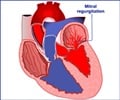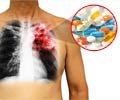- Harrison’s Principles of Internal Medicine 19th edition
What is Pulmonary Edema?
Pulmonary edema is a condition where fluid accumulates in the lungs.
The lungs are organs of respiration. Oxygen from the air passes through small air sacs of the lungs called alveoli and oxygenates the blood in small blood vessels surrounding the alveoli called pulmonary capillaries. Carbon dioxide from the blood diffuses into the alveoli and is removed from the body when the person breathes out.
The alveoli and the pulmonary capillaries are separated by lung tissue called the interstitium. Any fluid from the pulmonary capillaries that seeps into the interstitium is removed by the lymphatic system. This prevents accumulation of fluid in the lung tissue.
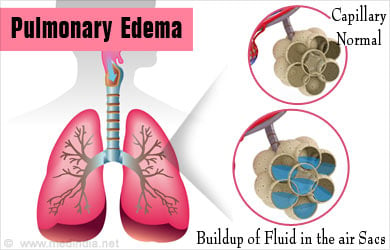
If large amounts of fluid seep into the interstitial space, the lymphatics may be unable to remove it, especially if it accumulates suddenly. This results in pulmonary edema. As the condition worsens, the fluid fills the alveoli as well, making the exchange of oxygen and carbon dioxide difficult.
The main factors which can result in pulmonary edema:
- Increased pressure in the pulmonary capillaries, which pushes the fluid into the interstitial space
- Damage to the pulmonary capillaries, which increases capillary permeability and results in seepage of fluid through its walls into the interstitial space
Cardiogenic and Non-cardiogenic Pulmonary Edema
Pulmonary edema is of two main types depending on the cause. When it occurs due to a problem with the functioning of the left side of the heart, it is referred to as cardiogenic pulmonary edema. If it occurs due to any other cause, it is referred to as non-cardiogenic pulmonary edema. Some patients may experience a combination of both types of pulmonary edema.
Acute and Chronic Pulmonary Edema
Pulmonary edema can also be classified as acute or chronic. Pulmonary edema that occurs suddenly is called acute pulmonary edema. It is a medical emergency and requires immediate treatment. Pulmonary edema that occurs slowly is called chronic pulmonary edema. It produces symptoms gradually.
What are the Causes of Pulmonary Edema?
Cardiac causes: Pulmonary edema can occur in heart failure affecting the left side of the heart. It may be a consequence of conditions like heart attack, severe anemia or diseases of the heart valves. These conditions may cause increased pressure in the left atrium, which in turn is transmitted to the lung capillaries. The pressure pushes the fluid through the capillaries into the lung tissue.
Non-cardiac causes: Non-cardiogenic pulmonary edema occurs due to conditions affecting the lungs either directly or indirectly. Causes of non-cardiogenic pulmonary edema include the following:
- Infections, damage to lungs caused by smoke or oxygen treatment, or aspiration of stomach contents into the lungs. These conditions increase capillary permeability.
- Injury to the chest or other parts of the body due to trauma
- Use of intravenous drugs of abuse like heroin
- Excessive intravenous fluids, which increase capillary pressure
- Side effects of medications like aspirin or chemotherapy used for cancer treatment
- Pulmonary embolism, a condition where a clot, usually from the lower limbs, travels to the lungs
- Travel to high altitudes where the air pressure is low
- Neurogenic pulmonary edema, which occurs as a reaction to a condition affecting the nervous system like trauma, meningitis, etc.
- Re-expansion pulmonary edema. This type of pulmonary edema occurs following treatment of pleural effusion or pneumothorax, which are conditions where fluid or air accumulates in the pleural space, respectively. On treatment of these conditions, a negative pressure is created in the chest, which could give rise to pulmonary edema.
- Following surgical procedures like cardiopulmonary bypass
- Obstruction of the upper airways, which creates negative pressure in the chest
- Liver or kidney disease
- Following multiple blood transfusions
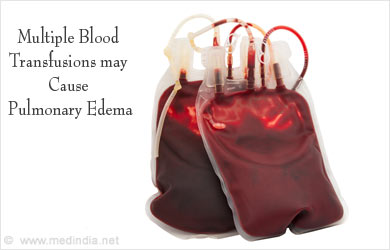
What are the Symptoms and Signs of Pulmonary Edema?
Acute pulmonary edema produces sudden and severe symptoms. In contrast, symptoms may be more gradual in chronic pulmonary edema. The patient usually prefers to sit up or stand, rather than lie down so that it is easier to breathe. Symptoms and signs of pulmonary edema include the following:
- Breathlessness on exertion
- Breathlessness on lying down and at night
- Increase in heart rate
- Cough with pink, frothy sputum
- Excessive sweating
- Feeling of drowning
- Feeling of anxiety
- Bluish color of the skin due to reduced oxygen content of blood. This condition is referred to as cyanosis.
- Altered mental status due to low oxygen levels in the blood
- Wheezing

How is Pulmonary Edema Diagnosed?
Pulmonary edema is diagnosed based on history, physical examination and various tests. History obtained from the patients or relatives may help to detect the possible cause of the pulmonary edema. Physical examination may reveal sounds from the lungs that can be heard with a stethoscope. Tests are used to confirm the presence of fluid in the lungs and to detect the underlying cause of the edema. Some of these include:
Chest X-ray
Chest X-ray may show changes consistent with the presence of fluid in the lungs
CT Scan
CT scan of the chest is more accurate in diagnosing changes in the lung associated with pulmonary edema
Pulse oximetry and arterial blood gas analysis
These tests are done to estimate the oxygen level in the blood
B-type natriuretic peptide and N-terminal proBNP (NT-proBNP)
B-type natriuretic peptide and NT-proBNP levels in the blood may be high in patients with a heart problem. These are normally produced by the heart muscles.
Pulmonary artery catheterization
This test measures the pressure in the pulmonary capillaries. It helps to differentiate between cardiogenic and non-cardiogenic pulmonary edema.
ECG and Echocardiography
These tests will help to identify any cardiac problems that may be responsible for the pulmonary edema
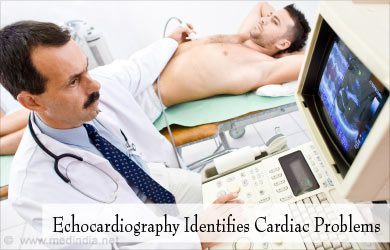
Other tests to identify underlying conditions like tests for liver and kidney function, blood tests for anemia etc.
How do you Treat Pulmonary Edema?
A pulmonary edema patient is placed on a bed with the head end slightly raised. Treatment of pulmonary edema includes the following:
- Restore the oxygen level in the blood. Oxygen is administered to ensure adequate supply to various tissues of the body. If oxygen administration does not improve the condition, positive-pressure ventilation may be used.
- Treat the underlying cause. Medications may be administered depending on the underlying cause
In addition, treatment of cardiogenic pulmonary edema may include the following:
- Medications to increase elimination of fluids from the body, relax blood vessels, increase contraction of the heart and treat abnormal heart rhythm.
- Intraaortic balloon counterpulsation, which may be used in patients with heart failure. In this procedure, a balloon on a catheter is inserted up to the aorta. Inflation and deflation of the balloon help to improve cardiac function and stabilize the patient before definitive surgical procedure can be carried out.
How do you Prevent Pulmonary Edema?
Some ways to prevent pulmonary edema include the following:
- Keep your heart healthy with a good diet and regular exercise
- Heart patients should control their salt intake
- Treat conditions like hypertension and high cholesterol; take medications on a regular basis as advised by the doctor
- Avoid smoking

- Climbing to high altitudes should be gradual. The person should be well acclimatized before climbing. Certain medications may be given before travel to high altitudes to prevent pulmonary edema



